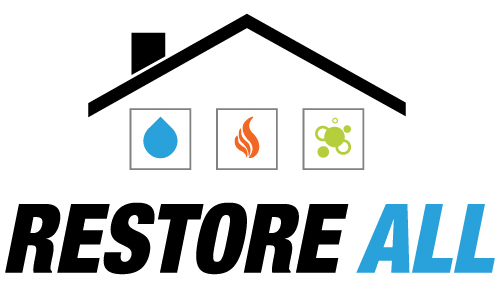 Maintaining a comfortable indoor climate in your home or commercial space is a top priority, but have you ever considered the critical role your air ducts play in this endeavor? These hidden pathways, responsible for distributing heated or cooled air throughout the building, can often be the unsung heroes – or villains – when it comes to your energy bills. Unbeknownst to many, faulty, leaky, or poorly insulated ductwork can wreak havoc on your HVAC system’s efficiency, leading to skyrocketing energy costs and uneven temperature distribution. In fact, the U.S. Department of Energy estimates that ductwork energy losses can account for more than 30% of the energy it takes to condition a space. That’s a staggering statistic that deserves your attention. In this comprehensive guide, we’ll delve deep into the common problems that plague air ducts, the telltale signs of leakage, and the steps you can take to identify and rectify these issues. By the end, you’ll be armed with the knowledge to plug the leaks, boost your energy efficiency, and keep your utility bills in check.
Maintaining a comfortable indoor climate in your home or commercial space is a top priority, but have you ever considered the critical role your air ducts play in this endeavor? These hidden pathways, responsible for distributing heated or cooled air throughout the building, can often be the unsung heroes – or villains – when it comes to your energy bills. Unbeknownst to many, faulty, leaky, or poorly insulated ductwork can wreak havoc on your HVAC system’s efficiency, leading to skyrocketing energy costs and uneven temperature distribution. In fact, the U.S. Department of Energy estimates that ductwork energy losses can account for more than 30% of the energy it takes to condition a space. That’s a staggering statistic that deserves your attention. In this comprehensive guide, we’ll delve deep into the common problems that plague air ducts, the telltale signs of leakage, and the steps you can take to identify and rectify these issues. By the end, you’ll be armed with the knowledge to plug the leaks, boost your energy efficiency, and keep your utility bills in check.
The Vital Role of Air Ducts
Your home or commercial building’s HVAC system is the beating heart that keeps the indoor environment comfortable and climate-controlled. But the air ducts are the intricate network of pathways that transport the heated or cooled air from the furnace, air conditioner, or heat pump to the various rooms and spaces.
These ducts play a crucial role in ensuring that the conditioned air reaches its intended destination, evenly distributing the temperature throughout the building. Without properly functioning ductwork, your HVAC system would be rendered ineffective, struggling to maintain the desired comfort levels.
The Perils of Leaky Ductwork
Unfortunately, air ducts are susceptible to a variety of issues that can compromise their performance and lead to energy waste. From cracks and holes to poor insulation and improper sealing, these problems can result in significant energy losses, higher utility bills, and uneven temperature distribution.
1. Ductwork Leaks
Leaks in air ducts can stem from a range of causes, including building renovations, corrosion, poor installation, manufacturer defects, or even pest damage. These openings allow conditioned air to escape, forcing your HVAC system to work harder to maintain the desired temperature. The U.S. Department of Energy reports that 20 to 30 percent of the air moving through a duct system is lost due to these leaks.
2. Inadequate Insulation
When air ducts run through unconditioned spaces like attics, garages, or basements, they are exposed to extreme temperatures. Without proper insulation, the conditioned air traveling through these ducts can become compromised, leading to energy losses and longer run times for your HVAC system.
3. Improperly Sealed Grills and Registers
Grills and registers that are not properly sealed can prevent air from flowing directly from the ductwork to the intended space. This results in your HVAC system working harder and longer to reach the desired temperature, ultimately consuming more energy.
4. Damaged Flexible Ductwork
Flexible ductwork, while convenient, is particularly vulnerable to damage from pests, twisting, or tearing. These issues can create openings that allow conditioned air to escape, undermining your HVAC system’s efficiency.
5. Poorly Configured Ductwork
In some cases, the root of the problem may lie in the initial design and installation of the ductwork. An insufficient or poorly designed duct system can lead to airflow imbalances and temperature inconsistencies, causing your HVAC system to work harder than necessary.
Identifying the Signs of Leaky Ductwork
Recognizing the symptoms of faulty ductwork is the first step in addressing the issue and restoring your energy efficiency. Keep an eye out for the following telltale signs:
High Utility Bills
If you’ve noticed a sudden spike in your heating and cooling costs, it could be a clear indication that your ductwork is allowing conditioned air to escape, forcing your HVAC system to work overtime to maintain the desired temperature.
Hot and Cold Spots
Uneven temperature distribution within your home or building, with some rooms feeling significantly warmer or cooler than others, can be a sign of ductwork problems. Leaks and poor insulation can prevent the even distribution of conditioned air.
Excessive Dust
Holes and cracks in your ductwork can allow dust, debris, and other contaminants from unconditioned spaces to be drawn into the air, leading to increased dust levels throughout the building.
Allergy Symptoms
If you or your occupants are experiencing more frequent allergy symptoms, such as sneezing, itchy eyes, or respiratory irritation, it could be due to the introduction of allergens and pollutants through leaky ductwork.
Visible Signs of Damage
Conducting a visual inspection of your home or building’s exterior can also reveal potential ductwork issues. Look for exposed insulation, visible ductwork, or areas where the interior wall structure is visible, as these may indicate gaps or leaks in the system.
Addressing Ductwork Leaks and Inefficiencies
Once you’ve identified the signs of ductwork problems, it’s time to take action. Addressing these issues can not only improve your energy efficiency but also enhance indoor air quality and overall comfort.
Professional Ductwork Evaluation and Testing
Enlisting the help of a qualified HVAC technician is crucial for accurately diagnosing and addressing ductwork issues. They can perform various tests, such as pressurization or infrared scanning, to identify the location and extent of any leaks or inefficiencies.
Ductwork Sealing and Repair
Depending on the severity of the problem, your HVAC technician may recommend sealing any identified leaks using specialized tapes or sealants. In more extensive cases, they may need to replace damaged sections of the ductwork to ensure a tight, efficient system.
Ductwork Insulation
Properly insulating the air ducts, especially those running through unconditioned spaces, can significantly improve their thermal performance and prevent energy losses. Your technician can recommend the appropriate insulation materials and installation methods for your specific ductwork configuration.
System Balancing and Optimization
In some cases, the root of the problem may lie in the initial design and installation of the ductwork. Your HVAC technician can perform system balancing and optimization, adjusting airflow and temperature distribution to ensure optimal efficiency and comfort throughout your home or building.
The Benefits of Addressing Ductwork Issues
By addressing the problems with your air ducts, you can unlock a host of benefits that extend beyond just lower energy bills. These include:
Improved Energy Efficiency
Sealing leaks, adding insulation, and optimizing your ductwork can significantly reduce the amount of conditioned air that escapes, allowing your HVAC system to operate more efficiently and consume less energy.
Reduced Utility Costs
With improved energy efficiency, you can expect to see a noticeable decrease in your monthly heating and cooling bills, providing long-term cost savings.
Enhanced Indoor Air Quality
Eliminating the entry points for dust, allergens, and other contaminants can improve the overall air quality within your home or building, promoting a healthier indoor environment.
Increased Comfort
By ensuring that conditioned air reaches the intended spaces, you can enjoy more consistent and comfortable temperatures throughout your living or working spaces.
Extended HVAC System Lifespan
When your HVAC system doesn’t have to work as hard to maintain the desired temperature, it experiences less strain and wear, potentially extending its overall lifespan.
Your air ducts play a crucial, yet often overlooked, role in the overall efficiency and performance of your HVAC system. Neglecting these hidden pathways can lead to significant energy losses, higher utility bills, and uneven temperature distribution, undermining your comfort and the health of your indoor environment.
We Provide Duct Sealing Solutions
Get comfortable, breathe healthier air, save money, and protect the planet with our simple home duct sealing solution.
> Learn More
Did you know 25-40% of the air that’s supposed to blow through your vents is escaping through cracks and holes in your air ducts? You could be wastefully heating and cooling areas like your attic, crawl space, and even behind walls.
Contact Us (954-338-1111) for a Free Estimate!
—
 About Restore All
About Restore All
Restore All, LLC is a licensed, insured, full-service Professional restoration company providing Water, Fire and Mold remediation and restoration for residential and commercial property. Our certified Water & Fire damage technicians and licensed Mold assessors & remediators are committed to providing professional restoration and fast and affordable service 24 hours a day. Call us today at (954) 338-1111 to see how we can help.
> Learn More

 About Restore All
About Restore All